|
|
A further image of the 1909 derailment on the Liverton Viaduct showing how the N.E.R. overcame the problems that accidents caused to its passenger timetable. Drawn up close to the head of the accident (on the Loftus side) is a commuter train. The passengers from a Whitby-bound train can be seen walking along the trackbed, some with small children, to board the commuter train, which will then take them on the rest of their journey. Simon Chapman tells us: ”The accident occurred in 1909 and the wagons involved were fairly new. Unusually for mineral wagons they had continuous (air) brakes and were being used on trains between Liverton Mines and Cargo Fleet Works.” The Breakdown Crane Association advised: ”The crane appears to be a Cowans Sheldon 15-tonner. I think it’s likely to have been either CME 1 or CME 2 which were built in 1893 for the NER.”
Image courtesy of Joyce Dobson and Keith Bowers, many thanks to Simon Chapman and the Breakdown Crane Association for additional information.
Believed to be the result of an accident on the Skinningrove Zig Zag Line. The hopper wagon in the photograph contains coke breeze, perhaps from the Skinningrove Gas Works; the image is believed to date from pre the Great War.
Image courtesy of Pat Bennison.
Looks like they got it fixed – it’s now sat level on the 4 foot – running lights are on and the engineers are retiring to their carriage. (no doubt for tea and tiffin!).
Image courtesy of Russ Pigott.
A Class 37 in Railfreight livery passes what looks like a Class 31 stranded on the roads at Crag Hall, by the lean on it it looks like a broken spring. Russ Pigott tells us: ”The 31 is actually derailed. It came off on the points leading to the headshunt that are worked from the box. I was having my annual assessment at the time and so was the signalman. Also the train was an inspection saloon from York, I’ve never seen so many gaffers in one spot! The cause was put down to poor maintenance of the point rodding and as the Chief Signalling Engineer was in the saloon I reckon he would have got a lot of stick afterwards!”
Image and additional information courtesy of Russ Pigott.
Lingdale Junction, recovery of engine N0. 1245, the accident on 5th November 1900 took place at the junction of two mineral branches near Brotton. A train loaded with ironstone descending from Lingdale mines got out of control on the 1 in 6 gradient and was derailed at trap points at the junction with Kilton branch. The engine 0-6-0 No. 1245 built at Darlington 1783, which was running tender first, at this point the line was on an embankment, when No.1245 was derailed it fell onto it’s right hand side on the slope of the embankment. It was recovered using two sets of block and tackle anchored to the rails on which the engine stood to keep them in place. Two further engines were attached to the tackle and as they moved away from one another No. 1245 was pulled upright.
Image and information courtesy of Derick Pearson.
The second photograph of the derailing at Lingdale, with some serious lifting gear in use! Two steam cranes being used to lift the locomotive back onto the rails. The accident report lists: “No.1245 was recovered using two sets of block and tackle anchored to the rails on which the engine stood to keep them in place. Two further engines were attached to the tackle and as they moved away from one another No. 1245 was pulled upright.“
Image courtesy of Derick Pearson, the Pem Holliday Collection and others.
A good engineering image this; showing the delicate job of righting a fallen locomotive using good old block and tackle! We can’t dispute the location, mostly because the line no longer exists, but also because there’s precious little film record of the line anyway. The crane on the engineering train is a vertical boilered steam crane. Simon Chapman advises: ”The date was November 1900, the engine was no. 1248, and the driver’s name was Metcalfe! The train was descending the gradient from Lingdale Mine with 22 loaded iron ore wagons and couldn’t stop in time so ran through the headshunt and was derailed, fortunately with no injuries to the crew.”
Update information courtesy of Simon Chapman.
The N.E.R engine is a J25 0-6-0 type and numbered 463. I am not sure about this but was told it was around 1910 but hope someone would confirm it. D. A. Twigg has provided more information: “Here are some details about the life of the Locomotive in the photograph. NER 463 built Dec/1899 : Re-numbered for LNER (1946) as 5689. Re- numbered for BR as 65689 , Jan /1949. Locomotive Specifics Designer W. Worsdell : Class J25 : Wheels 0-6-0; Builder Darlington Works : To Service During Dec/1899. Withdrawal week ending Monday 31/05/1954 : Service Life 54 years, 6 months, 1 day. 01/01/1948 Allocation West Auckland (AUK).
01/1949 Renumbered Renumbered to 65689. 31/05/1954 Withdrawn Condemned as 65689. There is no data to show it survived the cutting up of the locomotive.
Image courtesy of Derick Pearson, the Pem Holliday Collection and others, thanks to D. A Twigg for the update on the locomotive.
This is another shot of the accident in an earlier post. This clearly shows how the N.E.R. overcame the problems that accidents caused to its passenger timetable. Drawn up close to the head of the accident (on the Loftus side) is a commuter train. The passengers from a Whitby-bound train can be seen walking along the trackbed, some with small children, to board the commuter train, which will then take them on the rest of their journey. The accident occurred in 1909 and the wagons involved were fairly new. Unusually for mineral wagons they had continuous (air) brakes and were being used on trains between Liverton Mines and Cargo Fleet Works.
Many thanks to Simon Chapman for information.
Derailments were not uncommon on this viaduct, the curve and excess speed brought a few trains to grief! This image gives us a chance to see a good view of a heavy steam crane in action and also the damage caused – bet this took some rectifying!
|
|
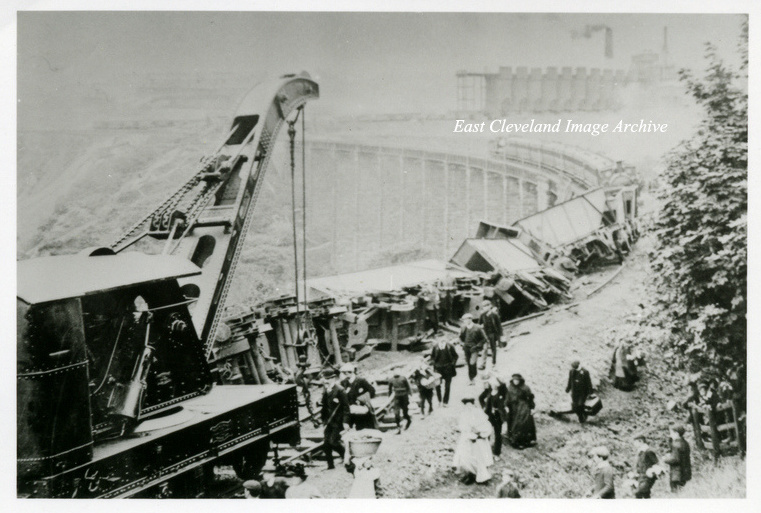
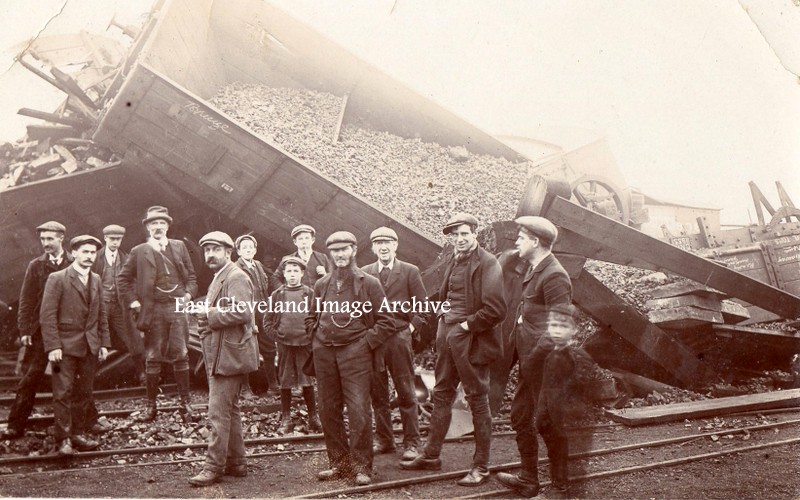
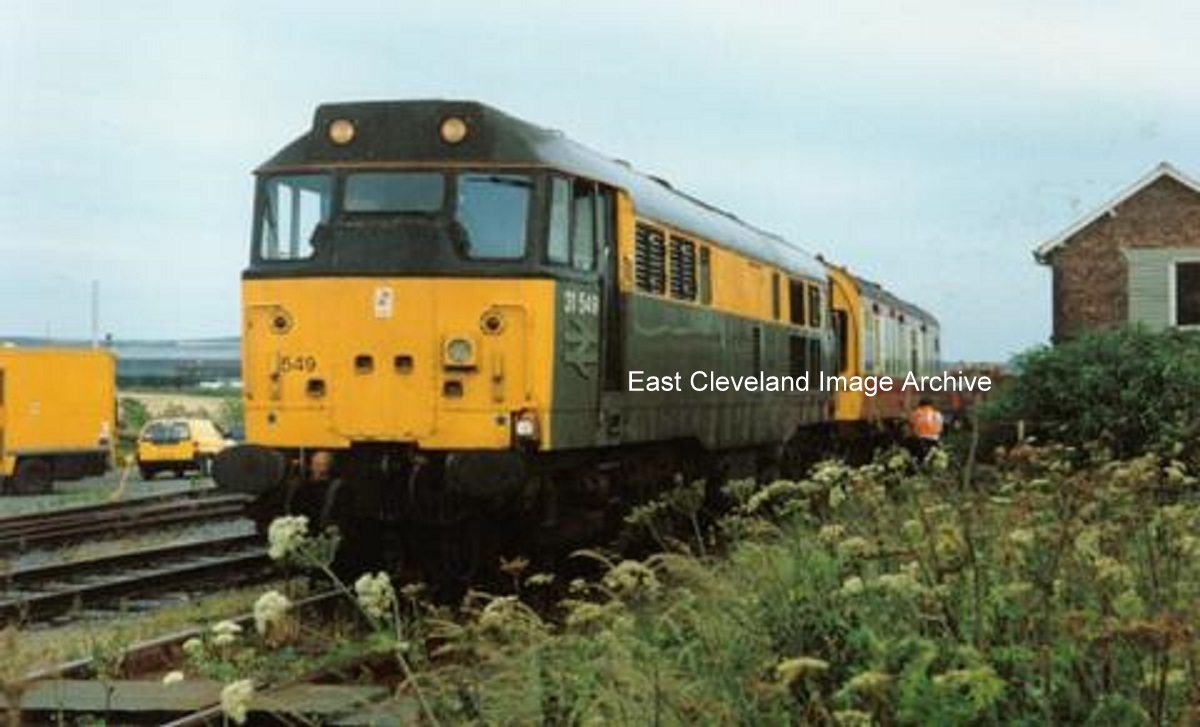
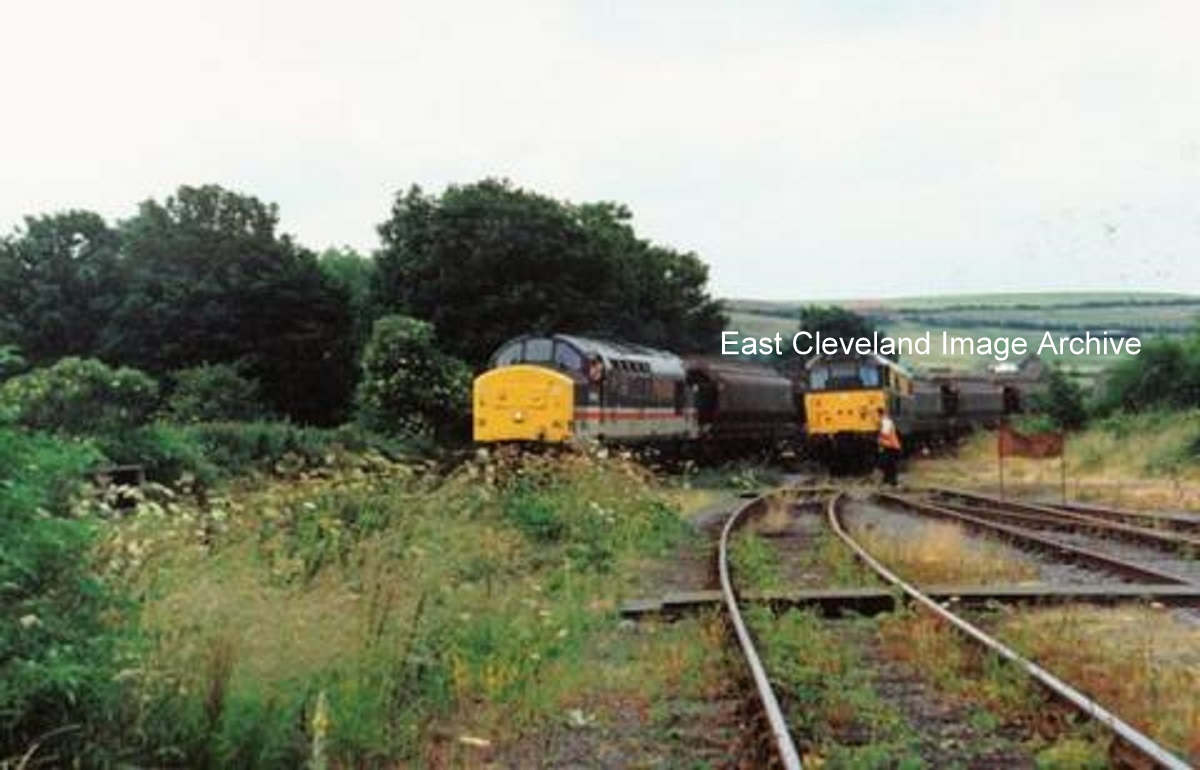
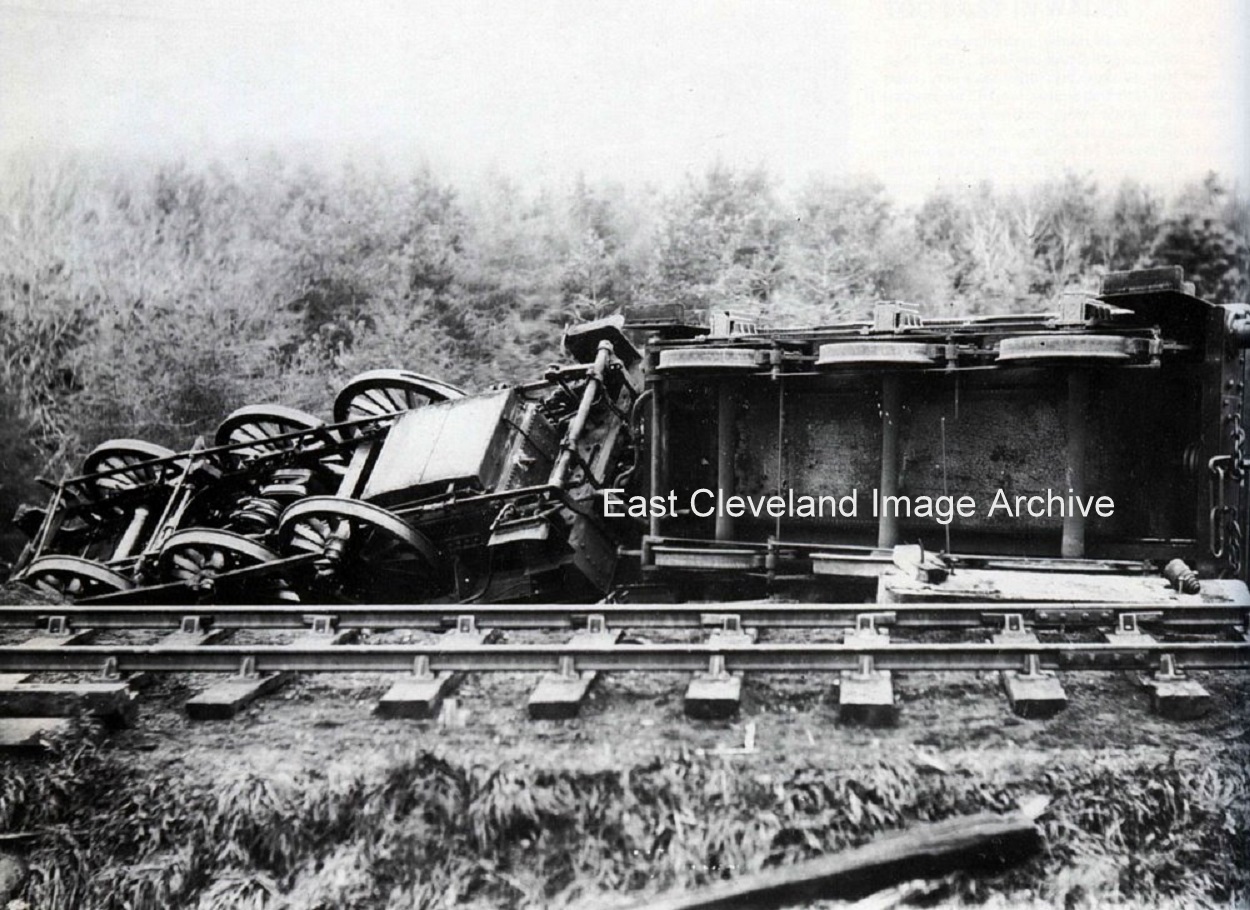
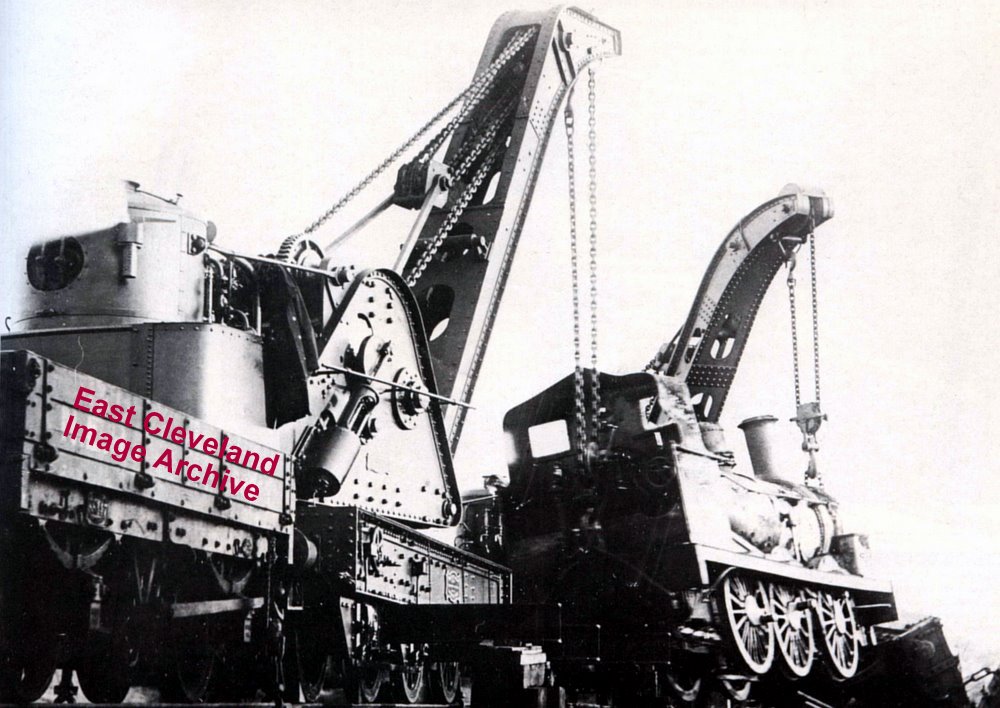
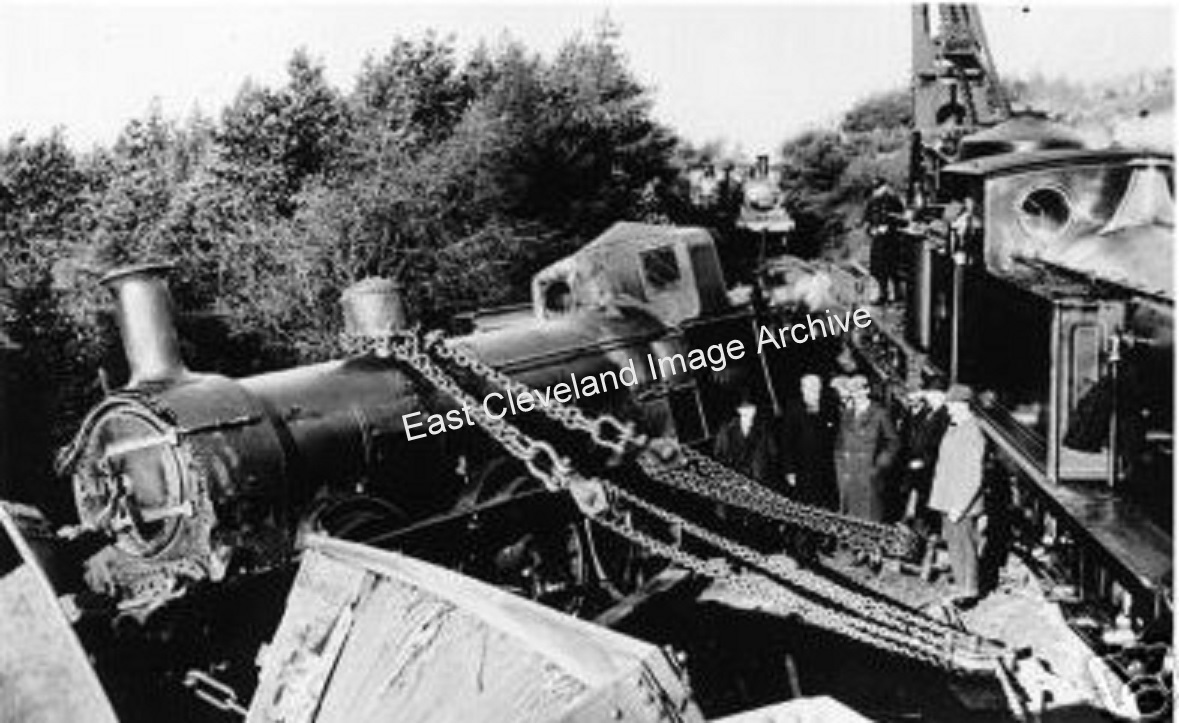
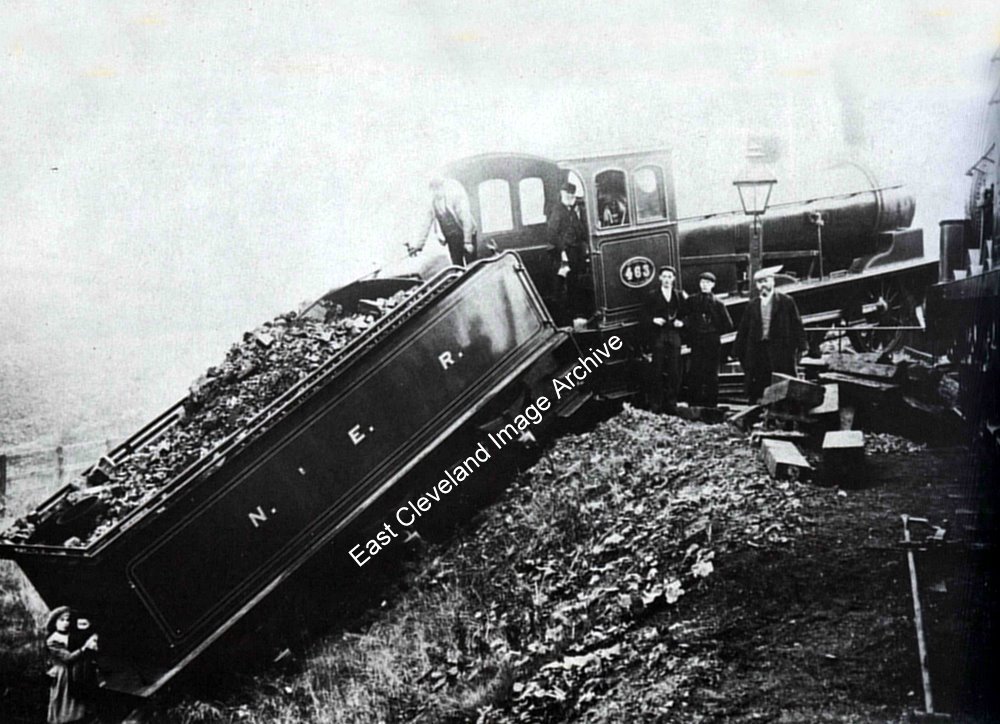
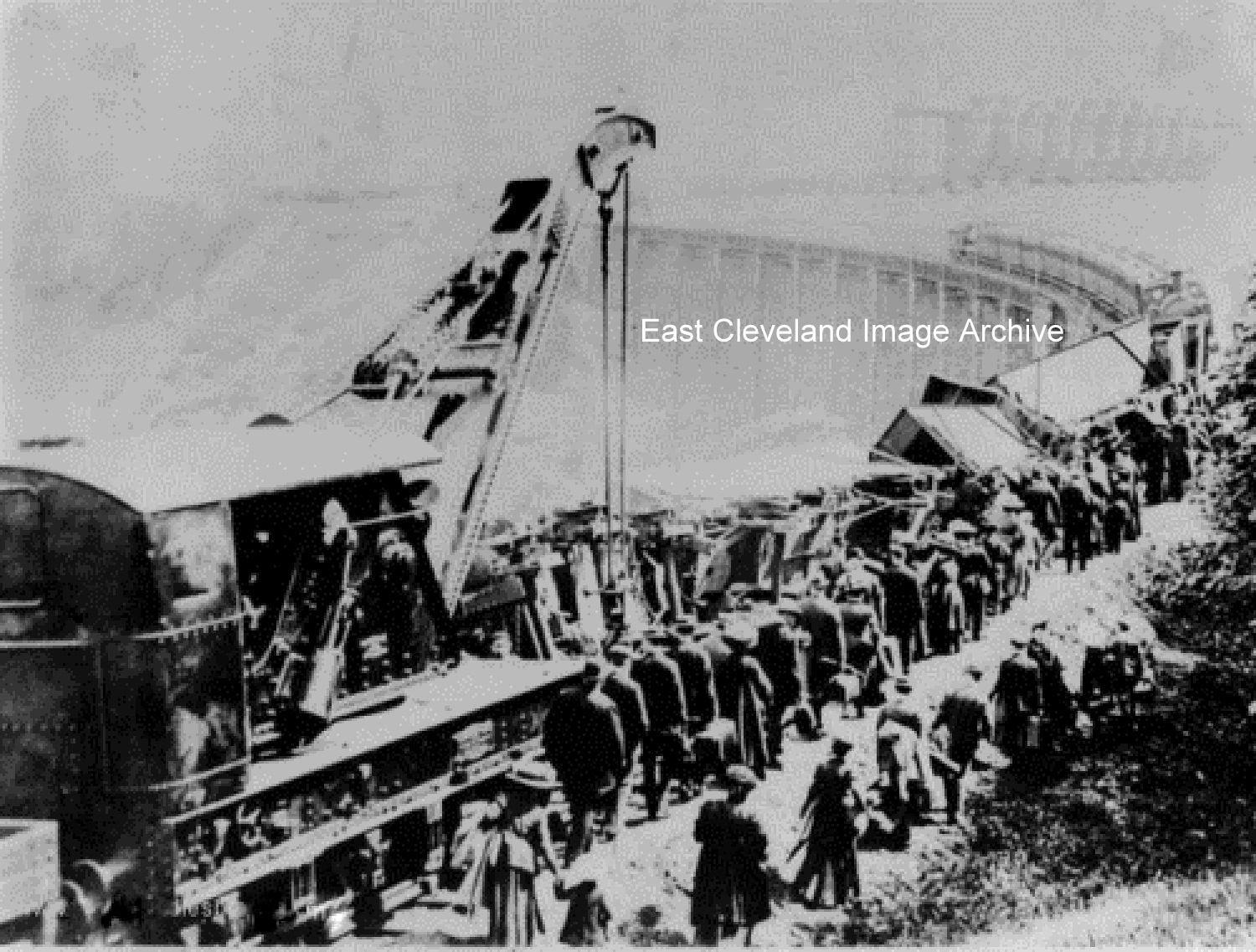
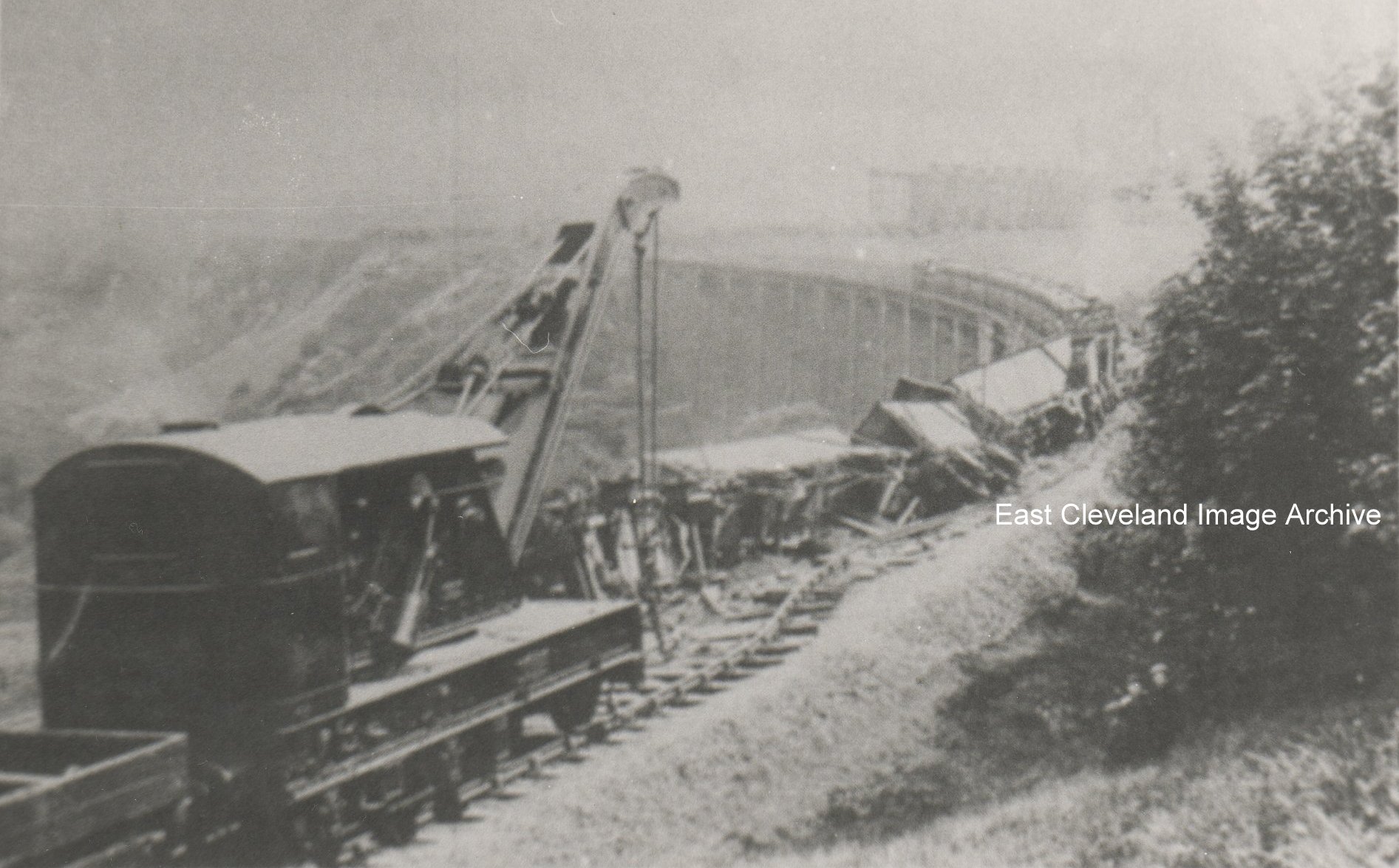
Recent Comments